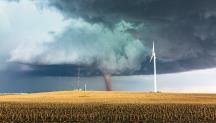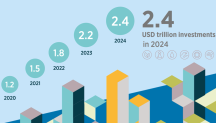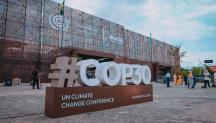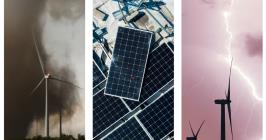
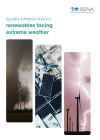
-
-
IRENA (2025), Quality infrastructure for renewables facing extreme weather, International Renewable Energy Agency, Abu Dhabi.
Copied
https://www.irena.org/-/media/Files/IRENA/Agency/Publication/2025/May/IRENA_INN_Quality_infrastructure_extreme_weather_2025.pdf
Copied
Quality infrastructure for renewables facing extreme weather
Newsletter
While the weather is a primary resource for the production of energy by a wind turbine or a solar panel, it also conceals a capacity for damage and disruption that directly impacts renewable energy infrastructure. The exposure of renewable energy generators to the increasing occurrence of extreme weather events, driven by climate change, highlights the urgent need to ensure power systems are climate resilient.
Resilience begins with robust quality infrastructure: the ecosystem of standards, testing, certification and monitoring that supports the safety and performance of energy technologies. By embedding quality infrastructure across the life cycle of renewable projects, from planning and design to construction and operation, countries can significantly reduce weather-related risks.
This means aligning technical specifications with increasingly severe climate conditions, enforcing construction and assembly practices that account for future extremes, and enabling project operators to monitor systems in real-time and respond pre-emptively. Quality infrastructure is not just about technical performance, it is also about financial security; systems built to be resilient experience higher yields, fewer outages, lower maintenance costs and greater investor confidence.
